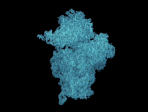 00:31:00
00:31:00
Seeing is Believing – A Hundred Years of Visualizing Molecules
It has been a hundred years since molecules were first visualized directly by using x-ray crystallography. That gave us our first look at molecules as simple as common salt to one as complex as the ribosome that has almost a million atoms. In the las....
More details | Watch now 00:28:00
00:28:00
Optical Microscopy – the Resolution Revolution
Throughout the 20th century it was widely accepted that a light microscope relying on conventional optical lenses cannot discern details that are much finer than about half the wavelength of light (200-400 nm), due to diffraction. However, in the 199....
More details | Watch now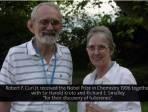 00:34:00
00:34:00
The Dawn of the Fullerenes: A Research Adventure
When he received the 1996 Nobel Prize in Chemistry together with Richard E. Smalley (who also worked at Rice) and Sir Harold Kroto (at the time at the University of Sussex, UK), this was a true example of national and international scientific collabo....
More details | Watch now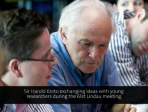 00:32:00
00:32:00
C60-Buckminsterfullerene: Not just a Pretty Molecule
Amongst the Nobel Laureates lecturing in Lindau, Sir Harold Kroto would probably earn the award for the most unusual and characteristic way of presenting. This lecture, which is the first he ever gave in Lindau, is no exception. Kroto`s way of presen....
More details | Watch now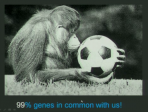 00:29:00
00:29:00
Créativité Sans Frontières
Children are not the only ones who instinctively appreciate the elegant beauty of highly symmetric structures such as the soccer ball and “play” with them. Artists, architects, scientists, mathematicians and engineers are also fascinated by elega....
More details | Watch now 00:35:00
00:35:00
Science – Lost in Translation?
This presentation explores the way in which the ideas and advances of people like Copernicus, Galileo and Kepler to Newton and Leibniz laid the foundations of Science. The Enlightenment was a byproduct of this philosophical breakthrough and right f....
More details | Watch now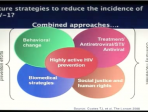 00:31:00
00:31:00
HIV, a Discovery Highlighting the Global Benefit of Translational Research
The fantastic progress made in medicine led the scientific community to hope about the complete eradication of infectious diseases in the middle of the 20th century. The sudden emergence of AIDS in the early 80's cruelly reminded us that this dream ....
More details | Watch now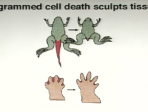 00:33:00
00:33:00
Programmed Cell Death in Development and Disease
Programmed cell death (often referred to as apoptosis) is a normal feature of animal development and tissue homeostasis. The misregulation of cell death has been implicated in a diversity of human disorders, including cancer, autoimmune diseases, he....
More details | Watch now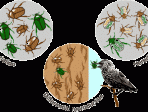 00:42:00
00:42:00
Natural Selection and the Future of Life
In his lecture Professor Christian Rene de DuvŽ gives a rough overview on the history of life starting about 3.5 billion years ago with the first cells up to the appearance of the first primates 70 million years ago, and he states that all organisms....
More details | Watch now 00:45:00
00:45:00
On the Genetic Basis of Morphological Evolution
Darwin's theory of evolution states that variation of the shape and pattern of the adults rather than the embryos are the basis for natural selection. In order to understand how morphological variation arises, it is important to identify the genes th....
More details | Watch now 00:28:00
00:28:00
DNA between Physics and Biology
The association of DNA with water is known since the deciphering of its double helical structure by X-Ray diffraction in 1953 (Watson, Crick, Wilkins and Franklin). However the power of DNA for organizing water seems to go far beyond the direct fill....
More details | Watch now 00:32:00
00:32:00
Cultural Values of Scientific Knowledge
The acquisition of scientific knowledge largely depends on the availability of appropriate research approaches and methodologies. Novel scientific knowledge represents cultural values. On the one hand, it enriches our world-view with impacts on our....
More details | Watch now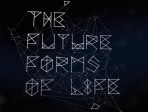 00:31:00
00:31:00
The Future of Life
Ever since its first appearance, more than 3.5 billion years ago, life has evolved without guiding plan, propelled by: 1) its own intrinsic properties, which, with the help of outside energy, provided the necessary driving force; 2) accidental geneti....
More details | Watch nowFrom the Structure of the Ribosome to the Design of New Antibiotics
Structural studies of the ribosome exemplify the evolution of structural studies in cell biology from the early negatively stained images of macromolecular assemblies in whole cells, to a detailed atomic understanding of the mechanism of action of a ....
More details | Watch nowDiscovery of Nitric Oxide and Cyclic GMP in Cell Signalling and their Role in Drug Development
The role of nitric oxide in cellular signaling in the past three decades has become one of the most rapidly growing areas in biology. Nitric oxide is a gas and a free radical with an unshared electron that can regulate an ever-growing list of biolog....
More details | Watch now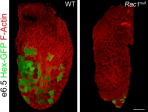 00:29:00
00:29:00
The Lability of the Differentiated State
Many classical studies have shown that cell fates become progressively restricted during development and that this restriction is typically irreversible. This has led to the dogma of the Stability of the Differentiated State: cells cannot typically ....
More details | Watch now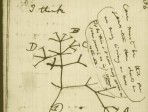 00:35:00
00:35:00
Updated Notions on Darwinian Evolution
Charles Darwin had based his theory of biological evolution on the observation that phenotypic variants of a given species can sometimes over-grow their parental population, and he attributed this to selective advantage, i.e., to the impact of natura....
More details | Watch now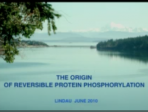 00:29:00
00:29:00
Protein Cross Talk in Cell Signaling
The main focus of the talk will be on signaling by tyrosine phosphorylation, which has been directly implicated in the regulation of cell growth, differentiation and transformation. External signals coming in the form of mitogenic hormones and growt....
More details | Watch nowSignals and Signalling Mechanisms in the Central Nervous System
Our brain is a network of about 10^11 neurons, which are connected by synapses. A neuron typically receives input from about 10000 other neurons, which can be either excitatory or inhibitory. The neuron integrates these inputs and generates an 'act....
More details | Watch nowInfections in the Etiology of Human Cancers
During the past century a number of chemical and physical risk factors for human cancers have been identified. Only relatively recently, mainly during the past 30 years, infectious agents have been identified as important human carcinogens. Besides....
More details | Watch now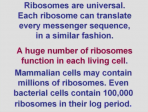 00:41:00
00:41:00
Climbing the Everest Beyond the Everest
The challenges associated with pursuing ribosomal crystallography can be described as a series of Everest climbing. At each step, when reaching the summit, a taller and more difficult one became exposed. Snapshots of this story will be described.__....
More details | Watch nowTelomeres and Telomerase in Human Health and Disease
Telomeres are the protective tips that stabilize the ends of chromosomes. The function of telomeres is to allow cells to divide while holding the genetic material intact. Telomeres contain specialized, simple repetitive DNA sequences that, together....
More details | Watch now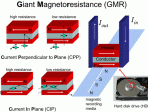 00:38:00
00:38:00
Humanity in the Cosmos
In the recent past, rapid scientific and technological developments have had tremendous impact on human society. Notably the pc, internet and mobile telephony changed the world and shrank our planet. These developments are vastly different from the....
More details | Watch now 00:31:00
00:31:00
From Millisecond to Attosecond Laser Pulses
A historical overview is presented of the experimental development of ever shorter laser pulses from 1960 to the present. Already in the early sixties nanosecond pulses were achieved and the entry into the picosecond domain was reached in the late s....
More details | Watch now
